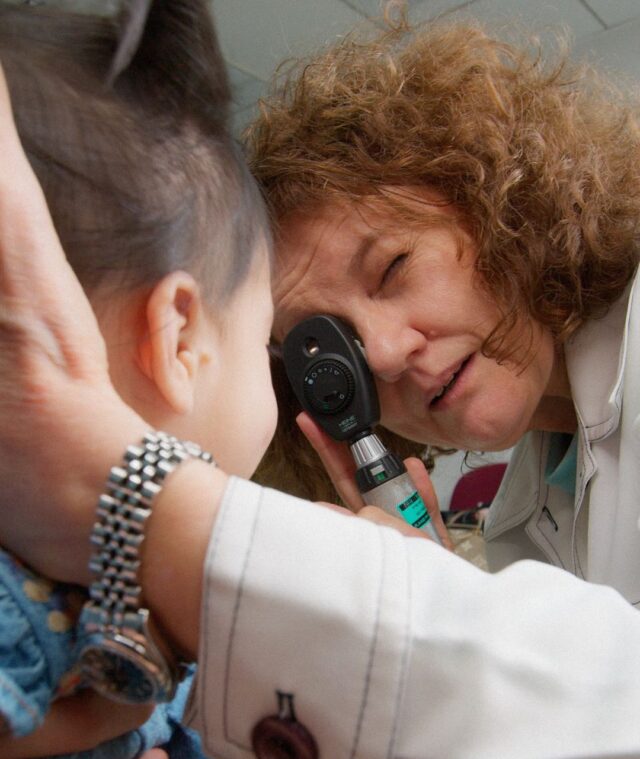Photo by Vanessa Bumbeers on Unsplash
Dry eyes, or dry eye syndrome, is an eye condition that brings much discomfort and distress.
Let’s look at the symptoms, the causes, and the potentially serious consequences of dry eyes, before looking at the treatments and help available.
What is dry eye syndrome?
In short, dry eye syndrome is an imbalance between tear production and tear loss. Let’s consider what that means in more detail.
Our eyes are naturally lubricated by tears. These tears do the very important job of keeping eyes clean and clear by washing away foreign bodies and reducing the risk of infection.
Basic Tear production takes place in the glands that sit inside your upper outer area of your eye sockets. Supplementary (and reflex) tears are secreted from your eyelids. Tears wash down from the glands onto your eye. When you blink, tears are spread across your eyeball to create a protective wet film. Finally, the tears drain away through the tear ducts, which are tiny holes in the inner corners of the eye, and then down through your nose and throat.
Your eyes must produce enough tears and these must drain away efficiently for your eyes to feel comfortable. When something goes wrong and upsets this balance, then dry spots can occur on the eye surface. This is what is known as dry eyes or dry eye syndrome.
What are the symptoms?
Dry, burning or stinging sensations are common symptoms of dry eye syndrome.
However, another common symptom of dry eyes usually surprises people; it’s watery eyes. Watery eyes are the eye’s way of attempting to compensate for the dry, scratchy feeling. However, these reflex tears are slightly different and do not contain the natural defenses or lubricant qualities of regular tears. This means they provide little to no relief, and can cause swelling and thus puffy eyes.
Here’s a summary of common dry eye symptoms. You may experience one or more of these.
- Feelings of burning, stinging or grittiness
- Dryness
- Watery eyes
- Itchiness
- Excessive mucus in the eye
- Sensitivity to bright light
Why do I have dry eyes?
There are several reasons why people might begin to experience dry eyes. These include:
-
The environment
Extreme environmental conditions such as very sunny or windy weather, or dusty, smoky or polluted air can irritate the eyes and cause “dry eyes” due to diluting and flushing away the original quality tears.
-
Contact lens use
Contact lenses can cause faster tear evaporation and foreign body type of irritation, making the eyes feel dry.
-
The natural ageing process
Tear production can decrease with age. By the time a person reaches 65, they may only be producing 40% of the tears they used to produce in their youth.
-
Menopause and pregnancy
Hormonal changes during menopause and pregnancy can affect tear production quality and quantity.
-
Medications
Dry eyes is listed as a side effect of many commonly used medications, including some of those used to treat depression, as well as some oral contraceptives, painkillers and antihistamines.
-
Computer use
Prolonged use of computer screens can interfere with normal blinking patterns which, in turn, can cause dry eyes, due to inefficient and incomplete blinking.
-
Systemic Disease
Diseases that list dry eyes as a potential symptom include diabetes, lupus, rheumatoid arthritis and asthma, to name but a few.
-
Dysfunctional Meibomian Glands
Behind the eyelashes are a row of oil producing glands providing a very specialized thin Meibum oil that helps the lids slide well over the eyeball surface, as well as reducing the rate of evaporation of our tears.
When this oil becomes stagnant and thickens, it spreads less well streaky, and causes wet friction, as well as become streaky with faster evaporation of tears, and thus dry, sore, red eyes.
This Meibum oil thickens from inefficient blinking, as well as neglect when eyelids are not well cleaned during face wash and makeup removal.
Accumulation of skin debris and old oil can cause irritation, inflammation and also infections and infestations of microbes that live on this debris. Styes and Blepharitis has become a very common cause of sore, red and dry eyes.
Why should I take dry eye syndrome seriously?
You must take the symptoms of dry eyes seriously.
If dry eye syndrome is left untreated, it can damage the eye surface tissues and possibly scar the cornea (the clear surface of the eye).
A clear cornea is essential to good vision. Firstly, it allows light through. Vitally, it also provides around 75% of the eye’s focusing power. It also provides a protective layer, shielding other crucial parts of the eye, such as the iris and pupil. It is really important that we do all that we can to safeguard the health of our corneas.
While there’s not always a cure for dry eye syndrome, there are things that can be done to manage symptoms and reduce the chances of permanent damage and vision reducing complications.
What treatments are available?
As an eye specialist in Dubai, we can offer our patients one or more of the following options for treatment, depending on their unique circumstances.
Attention to Eyelid Hygiene
Simple thorough cleaning of eyelids and eyelashes go a long way to reduce accumulation of debris among eyelashes, and so reduce itching and overgrowth of seborrhea and eyelash follicle mites. These mites thrive on the debris we leave, and contribute to styes and inflamed eyelids.
Artificial tears
These drops provide symptomatic relief and improve comfort levels. They cannot, however, replace treating the cause because they may only assist the natural tear film and its important infection-fighting capabilities.
Punctal occlusion
If symptoms of dry eyes persist and a patient is considered to be at risk of corneal damage, then punctal occlusion will be considered, if the eyes are not inflamed. This can be a permanent or semi-permanent solution.
This treatment involves plugging the draining tear ducts so that tears stay on the eye much longer. A tiny silicone stopper is inserted into the punctum – the opening of the tear duct. This procedure only takes a few minutes. Your eye doctor will discuss with you how long they consider the punctal plugs to be helpful and necessary.
What should I do if I experience dry eye symptoms?
If you are experiencing symptoms of dry eye syndrome, it’s really important to see an eye doctor as soon as possible. The Eye Doctor will rule out serious conditions and advise helpful measures that will provide you with symptom relief. A prompt visit to the ophthalmologist will also lessen the chances of permanent damage to your eyesight.
To discuss your dry eye symptoms, don’t hesitate to contact us today.








